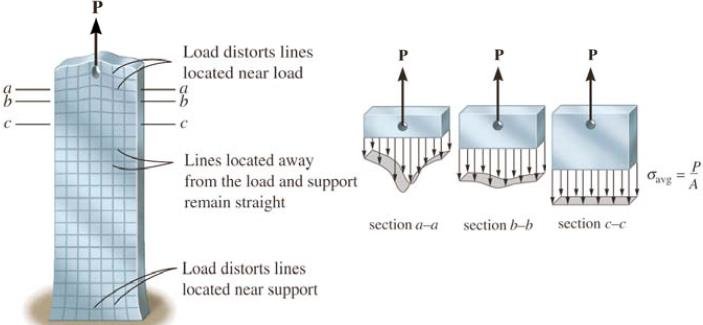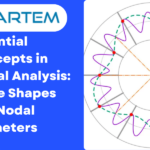Understanding Saint-Venant’s Principle in Structural Mechanics
Saint-Venant’s Principle, named after the French engineer Adhémar Jean Claude Barré de Saint-Venant, is a concept in structural mechanics that provides guidance on how the distribution of stress becomes more uniform at a sufficient distance from a concentrated load or point of load application. The principle is particularly useful when analyzing the behavior of structures under localized loads.
Saint-Venant’s Principle:
Statement: “The stresses and displacements caused by the application of a concentrated load to a structural member become nearly constant at a sufficiently large distance away from the point of load application.”
In simpler terms, as you move away from the point where a load is applied, the local effects of the load become less significant, and the behavior of the structure tends to become more uniform.
Formula for Point Load Application:
When applying a point load to a structural member, such as a beam, the distribution of stress and deformation can be determined using the equations derived from Saint-Venant’s Principle. For a simply supported beam subjected to a concentrated load at a point, the bending moment (M) and shear force (V) formulas at a distance x from the point of load application are given by:
Bending Moment (M): $$ M(x)=P⋅(L-x)\;$$
where:
P is the point load applied,
L is the span length of the beam,
x is the distance from the point of load application.
Shear Force (V): $$V(x)=P$$The shear force remains constant along the length of the beam and is equal to the applied point load.
Assumptions & Considerations:
1. Linear Elastic Material:
Saint-Venant’s Principle is applicable to linear elastic materials, where the stress-strain relationship is linear.
2. Sufficient Distance:
The principle becomes more accurate as you move a sufficient distance away from the point of load application. This distance is generally considered to be a few times the depth of the beam.
3. Uniformly Loaded Section:
Saint-Venant’s Principle is more accurate for predicting the behavior of a section that is uniformly loaded. It is less accurate for predicting local effects near the point of load application.
4. Symmetrical Loading:
For symmetrical loading conditions, Saint-Venant’s Principle tends to be more applicable.

Application in Engineering:
Saint-Venant’s Principle is widely used in engineering practice, particularly in structural analysis and design. It allows engineers to simplify complex loadings and assess the behavior of structures under more manageable conditions, especially when analyzing the effects of localized loads on beams and other structural elements.
It’s important to note that while Saint-Venant’s Principle is a valuable tool, there are situations where its applicability may be limited, such as in regions close to the point of load application or in cases involving significant torsional effects. Engineers should be mindful of these limitations and use the principle judiciously in their analyses.





